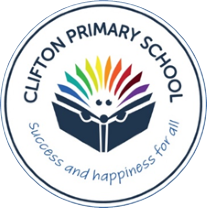History
History at Clifton
Our aims are to fulfil the requirements of the National Curriculum for history; providing a broad, balanced and differentiated curriculum; ensuring the progressive development of historical concepts, knowledge and skills; and for the children to develop a love for history.
History teaching at Clifton Primary School has a wide application to everyday life, teaching the children to enjoy learning about the past and to have a better understanding of the society in which they live.
Our History is taught through the CUSP Curriculum, in order to study the past – learning about people, places, events and changes CUSP History draws upon several powerful sources of knowledge: substantive, disciplinary, historical analysis and substantive concepts.
Substantive knowledge: This is the subject knowledge and explicit vocabulary used about the past. Common misconceptions are explicitly revealed as non-examples and positioned against known and accurate content. Misconceptions are challenged carefully and in the context of the substantive and disciplinary knowledge. In CUSP History, it is recommended that misconceptions are not introduced too early, as pupils need to construct a mental model in which to position new knowledge.
Disciplinary knowledge: This is the use of that knowledge and how children construct understanding through historical claims, arguments and accounts. We call it ‘Working Historically.’ The features of thinking historically may involve significance, evidence, continuity and change, cause and consequence, historical perspective, and contextual interpretation.
Historical analysis is developed through selecting, organising and integrating knowledge through reasoning and inference making in response to our structured questions and challenges. We call this ‘Thinking historically’
Substantive concepts, such as tax, invasion and civilisation are taught through explicit vocabulary instruction as well as through the direct content and context of the study.
